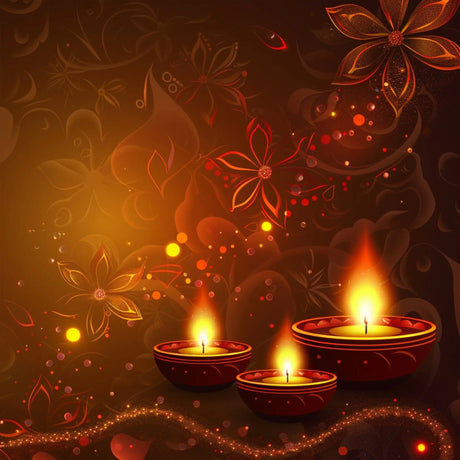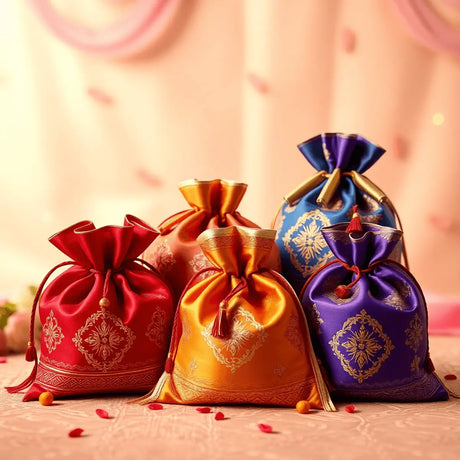Introduction: The Meaning of Om: Unlocking the Power of This Sacred Symbol
Om (ॐ) is a sacred symbol in Hinduism that represents the essence of the universe and reality. It is considered a primordial sound that invokes divine authority and is often chanted at the beginning and end of prayers and meditations.
Why Understanding the Meaning of Om is Important
Understanding the meaning of Om is important for several reasons:
- Cultural Significance: Grasping its implications fosters respect for Indian traditions.
- Spiritual Connection: Recognizing Om's power enhances personal spiritual practices.
- Universal Relevance: The symbol transcends Hinduism, appearing in Buddhism, Jainism, and Sikhism.
Om serves as a bridge between individual consciousness and universal truths in various spiritual practices. By exploring its depths, one can unlock its transformative potential, guiding practitioners toward greater self-awareness and enlightenment.
1. The Om Symbol: A Deep Dive into Its Spiritual Significance
The Om symbol (ॐ) holds profound spiritual significance, representing the essence of the universe and the eternal nature of reality. This sacred emblem encapsulates a multitude of meanings, making it a central figure in various spiritual practices.
Visual Components and Their Meanings
- Curved Shape: Represents the waking state (Jagrat) and our earthly existence.
- Semi-Circle: Symbolizes the dream state (Svapna), reflecting consciousness that transcends physical limitations.
- Dot: Denotes the state of deep sleep (Sushupti) as well as enlightenment, illustrating the ultimate reality beyond existence.
Each element intricately weaves into a tapestry of meaning that connects practitioners to their spiritual journeys.
Cultural Variations
The depiction of Om varies across religions:
- In Hinduism, it is often stylized with intricate designs, enhancing its visual allure. This is evident in products like the Om aluminum silver incense holder, which serve both practical and aesthetic purposes in Hindu households.
- In Buddhism, Om can appear within mandalas, symbolizing unity and interconnectedness.
- Jainism features Om in religious texts, emphasizing its role in meditation and spiritual exercises.
These variations highlight not only the adaptability of the symbol but also its universal appeal in conveying profound truths across cultures. The Om symbol's versatility extends beyond spirituality into personal and cultural expressions. For instance, during festivals like Raksha Bandhan, Om rakhi is a popular choice, symbolizing protection and love between siblings.
2. The Origins and Evolution of Om in Ancient Texts
The sacred sound Om (ॐ) has its roots deeply embedded in ancient Vedic texts, where it is celebrated as a primordial sound that encapsulates the essence of the universe.
1. Historical Background
The earliest references to Om appear in the Rigveda, one of the oldest known scriptures, highlighting its significance as a sonic representation of divine authority and creation.
2. Evolution of the Concept
Over centuries, Om evolved within Hindu spirituality, becoming integral to meditation practices aimed at achieving liberation (moksha). It symbolizes the ultimate reality and the interconnectedness of all existence. This evolution reflects how spiritual seekers embraced Om not only as a sound but as a profound philosophical concept.
3. Connections to Other Religions
Beyond Hinduism, Om resonates within Buddhism and Jainism. In these traditions, it symbolizes unity with the divine and serves as an essential component in their respective spiritual practices. Its presence across various religions underscores its universal appeal and transcendent nature.
Rich in historical context, the evolution of Om illustrates its enduring significance, inviting practitioners from diverse backgrounds to explore its depths in their spiritual journeys.
In Hinduism, the significance of Om is often intertwined with various rituals and practices. For instance, during festive occasions like Maha Shivratri, it is common to incorporate Shiva Lingam statues or Shiva Lingam shivlings with specific designs into these spiritual observances. These items are not just decorative; they serve as powerful symbols in Hindu worship.
Additionally, the sound of Om is often used in various forms of Hindu car hanging ornaments, which serve both decorative and spiritual purposes by infusing vehicles with positive energy.
Moreover, Om holds a special place during festivals like Raksha Bandhan, where Om-themed rakhi bracelets are exchanged between siblings as a symbol of protection and love.
3. Understanding the Sound and Meditative Power of Om
The sacred sound of Om (ॐ) is more than just a symbol; it has deep meaning in its pronunciation. It consists of three distinct sounds:
- 'A': Represents the waking state, the world of form and activity. This sound resonates with the vibrancy of life and consciousness.
- 'U': Corresponds to the dreaming state, a realm of creativity and intuition. This sound connects the conscious and subconscious mind, allowing for deeper reflections.
- 'M': Signifies deep sleep, a state of stillness and tranquility that goes beyond duality. The closing sound represents unity and enlightenment.
These sounds illustrate the journey through various states of consciousness, leading to self-realization and spiritual awakening. Each sound acts as a key, opening doors to deeper understanding during meditation practices.
The Transformative Power of Chanting Om
Chanting Om is a powerful tool in spiritual rituals, with practitioners often experiencing heightened awareness and connectedness. The vibrations created by this sacred chant bring harmony to the body, mind, and spirit. As one engages with these sounds, they embark on a journey towards inner peace and clarity.
The meditative power of Om enhances both individual experiences and collective consciousness, connecting personal insights with universal truths.
Enhancing Your Spiritual Journey with Om Decor
To enhance your spiritual journey, consider incorporating Om-themed decor into your meditation space or home. Such items not only serve as beautiful decorations but also act as constant reminders of the profound significance of the Om sound in your spiritual practices.
4. Exploring Spiritual Practices and Techniques Involving Om
The profound significance of Om extends into various meditation techniques and mindfulness practices. Practitioners often incorporate this sacred sound to deepen their spiritual experiences.
Role of Om in Meditation
The chanting of Om serves as a grounding practice, helping individuals focus their minds and connect with the present moment. This invocation creates a vibrational resonance that aligns the practitioner with higher states of consciousness.
Benefits of Chanting Om
Regular chanting can:
- Enhance mental clarity and emotional stability
- Foster a sense of peace and well-being
- Promote deeper relaxation, reducing stress levels
Techniques for Incorporating Om into Daily Routines
Simple methods can help weave Om into spiritual practice:
- Begin or conclude meditation sessions with several chants of Om, allowing the sound to resonate within.
- Use Om as a mantra during yoga sessions to synchronize breath and movement.
- Create moments throughout the day to pause, breathe deeply, and chant Om silently or aloud, cultivating mindfulness.
Engaging with the sound of Om unlocks pathways for personal growth, enriching the spiritual journey while fostering connections with the universe.
Incorporating physical elements associated with Om can further enhance these spiritual practices. For instance, using an Om aluminum silver incense holder during meditation can create a calming atmosphere with the soothing scent of incense.
Alternatively, carrying eco-friendly reusable bags with an Om print can serve as a daily reminder of your spiritual journey while also promoting sustainability.
Furthermore, gifting an Om-themed rakhi during Raksha Bandhan can symbolize protection and love in your relationship with your brother.
Lastly, incorporating Om design evil eye decorations in your living space can serve as a protective charm while also enhancing the aesthetic appeal of your home.
5. The Cosmic Connection: Bridging Individual Consciousness with Universal Truths through Om
Om represents the idea that we are all connected, both as individuals and as part of the universe. It is a powerful symbol that reminds us of the deeper truths that exist beyond our individual experiences.
Understanding the Significance of Om
Om holds great significance in various spiritual traditions, particularly in Hinduism and Buddhism. It is considered the primordial sound, the vibration from which all creation emerged. When chanted or meditated upon, Om has the ability to align our consciousness with the cosmic energy that permeates everything.

The Power of Om in Connecting with Universal Truths
Here are some ways in which Om can help bridge the gap between our individual selves and the larger universe:
- Unity with the Divine: Chanting Om invokes a sense of oneness with the divine, allowing practitioners to transcend their limited perceptions. It serves as a reminder that within each individual lies a fragment of the universal spirit.
- Relationship Between Ātman and Brahman: The interplay between Ātman (individual consciousness) and Brahman (cosmic world) reflects a deep philosophical understanding. As individuals meditate on Om, they experience moments where personal consciousness aligns with cosmic reality, revealing insights about their purpose and place in the universe.
- Insights from Practice: Engaging with Om facilitates transformative experiences. Practitioners often report enhanced clarity, emotional healing, and spiritual awakening. These insights encourage individuals to embrace their connection to something greater than themselves.
Incorporating Om into Daily Life
Incorporating Om into daily life can illuminate paths toward deeper understanding and foster a harmonious relationship with both self and cosmos. This can be achieved not only through meditation but also by embracing symbols of Om in everyday life.
- For instance, buying an Om Swastik wall hanging set could serve as a constant reminder of this divine connection in your living space.
- Additionally, during festive occasions like Raksha Bandhan, gifting an Om designer rakhi or an Aum rakhi card to your brother can further strengthen these bonds while embodying the spiritual significance of Om.
6. Artistic Representations, Cultural Significance, and Modern Adaptations of Om Symbolism
The symbol of Om (ॐ) has transcended its spiritual roots to inspire a rich tapestry of artistic representations across various cultures.
1. Iconography
Om is often depicted through intricate designs in traditional Indian art forms such as:
- Madhubani paintings: These vibrant works feature the Om symbol surrounded by nature motifs.
- Tanjore paintings: Gold leaf embellishments highlight the sacred sound's divine essence.
2. Cultural Expressions
The significance of Om extends beyond Hinduism. Its presence can be seen in:
- Buddhist art: Where it symbolizes harmony and interconnectedness.
- Jain temples: Reflecting the shared spiritual heritage within Indian religions.
3. Modern Interpretations
Contemporary artists and designers have embraced Om, leading to innovative adaptations in:
- Fashion: Clothing and accessories adorned with the Om symbol promote spiritual awareness. For instance, a personalized rakhi gift hamper featuring an Om rakhi can be a beautiful blend of tradition and modernity.
- Home decor: Wall art, sculptures, and textiles featuring Om foster a sense of tranquility and mindfulness. A cloth pooja mat with an Om kalash print serves as a perfect example of how the symbol is integrated into home decor items.
This evolution showcases how the meaning of Om resonates with diverse audiences, bridging ancient traditions with modern sensibilities while fostering cross-cultural influences that celebrate unity and spirituality. Additionally, items like Om paper carry bags are becoming popular choices for eco-friendly gifting options during occasions like weddings or housewarmings.
Discovering the Power of Om for Personal Growth and Spiritual Awakening
The symbol of Om holds the key to understanding our existence. This sacred sound invites us to:
- Explore its significance in daily life, fostering a deeper connection to self and the universe.
- Integrate chanting or meditation with Om into personal routines, enhancing spiritual awareness and mindfulness.
By embracing Om, we open ourselves up to transformative experiences that can lead us towards spiritual awakening. As we immerse ourselves in its vibrations, we gain a deeper understanding of consciousness and existence.
Incorporating the meaning of Om into our personal journeys encourages us to reflect on our life's purpose and our connection with the divine. Each chant serves as a reminder of our unity with all that is sacred, nurturing our growth and enlightenment. Engage with this powerful symbol and let it illuminate your path toward a richer, more meaningful existence.























1 comment
This is beautifully explained! Explores Om’s sound-syllable ‘A-U-M,’ its visual symbol, cosmic states, and transformative power.